


If you've ever encountered a situation where your brake caliper piston won't go back in, you know how frustrating and concerning it can be. A stuck caliper piston can lead to reduced braking performance, uneven brake pad wear, and even potential safety hazards. In this article, we'll explore the common reasons behind this issue and provide you with easy fixes to get your caliper piston working smoothly again.
We'll start by understanding the vital role that caliper pistons play in your vehicle's brake system and how they function. Then, we'll dive into the five most common causes of a stuck caliper piston, including corrosion, lack of lubrication, contaminated brake fluid, damaged seals, and worn components. We'll also discuss the symptoms to watch out for, diagnostic techniques, and step-by-step troubleshooting guides to help you resolve the issue.
By the end of this article, you'll have a comprehensive understanding of why your caliper piston may be stuck and how to fix it. Plus, we'll provide you with valuable tips on preventive maintenance to keep your brake system in top shape and ensure a safe, reliable driving experience.
Brake caliper pistons are essential components that convert hydraulic pressure from the brake fluid into mechanical force, which ultimately slows down or stops your vehicle. When you press the brake pedal, brake fluid is pushed through the brake lines and into the calipers, causing the pistons to extend and press the brake pads against the rotors. This friction between the pads and rotors is what slows down your vehicle's wheels.
Caliper pistons are typically made of metal or phenolic material and are housed within the brake caliper. They have rubber seals around them to prevent brake fluid leaks and ensure smooth movement. When the brake pedal is released, the piston should retract back into the caliper, allowing the brake pads to move away from the rotor. This process is aided by the square-cut rubber seal, which acts as a spring to pull the piston back when the hydraulic pressure is removed.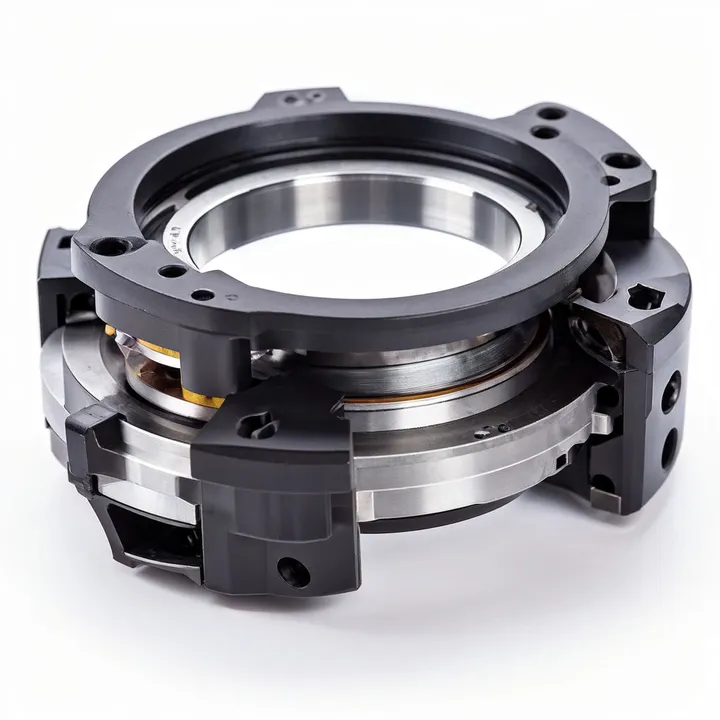
One of the most common reasons for a stuck caliper piston is corrosion or rust buildup. This occurs when moisture or contaminants enter the caliper and react with the metal surfaces. Road salt, debris, and even condensation can contribute to corrosion over time.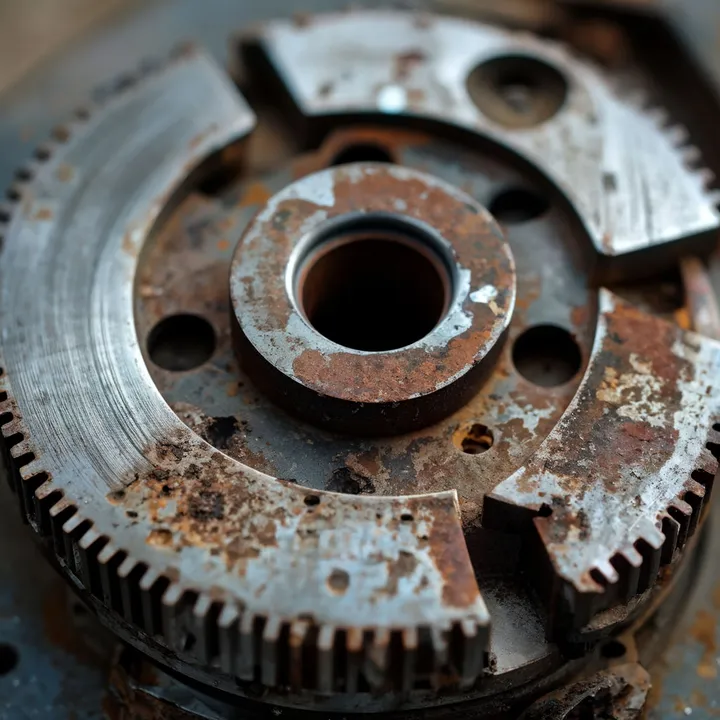
As corrosion builds up between the piston and the caliper bore, it creates a rough, uneven surface that prevents the piston from sliding smoothly. This resistance can cause the piston to stick in its extended position, even when the brake pedal is released.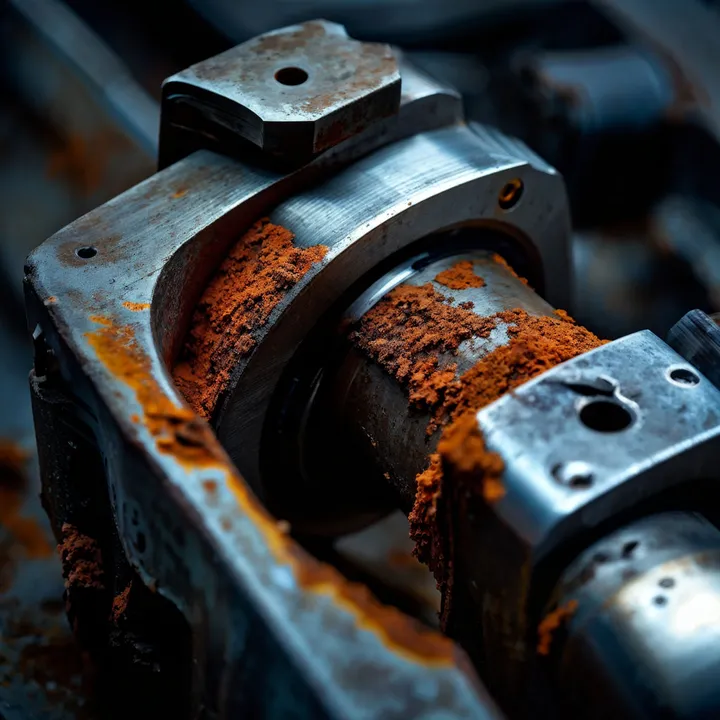
Proper lubrication is crucial for the smooth operation of caliper pistons. The rubber seals around the pistons require a thin layer of brake lubricant to minimize friction and prevent sticking.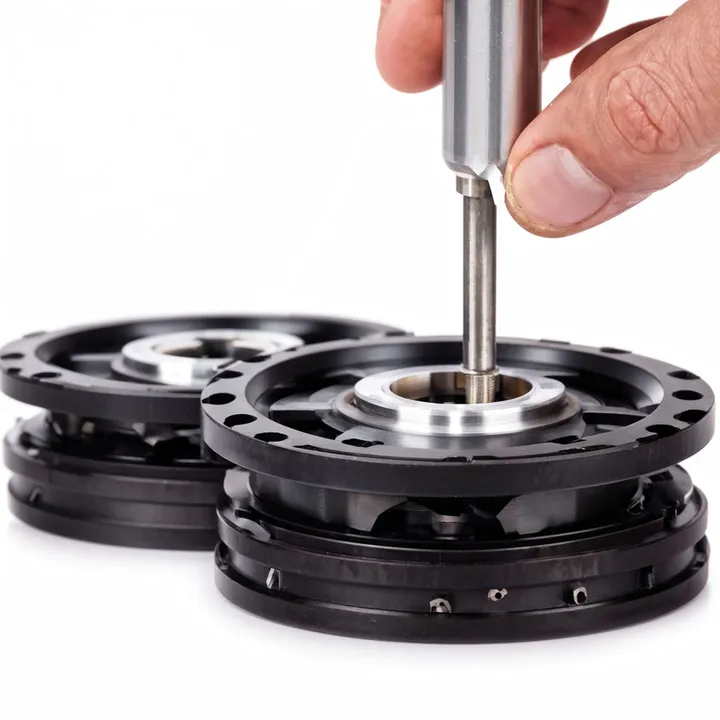
Without adequate lubrication, the piston seals can become dry, brittle, and prone to tearing. This damage can allow brake fluid to leak past the seal, causing the piston to stick or not fully retract.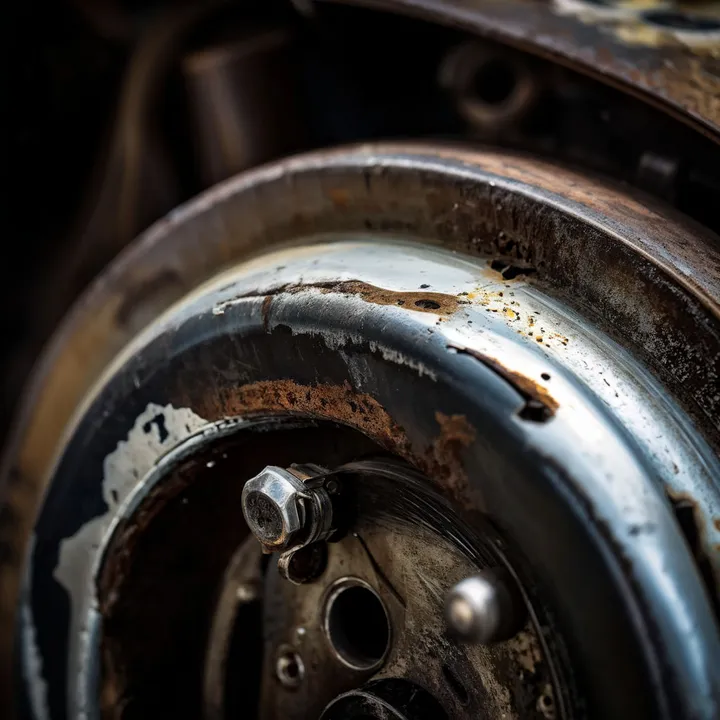
Brake fluid can become contaminated by moisture, debris, or even microscopic particles from worn brake components. As brake fluid ages, it can also absorb moisture from the atmosphere, leading to contamination.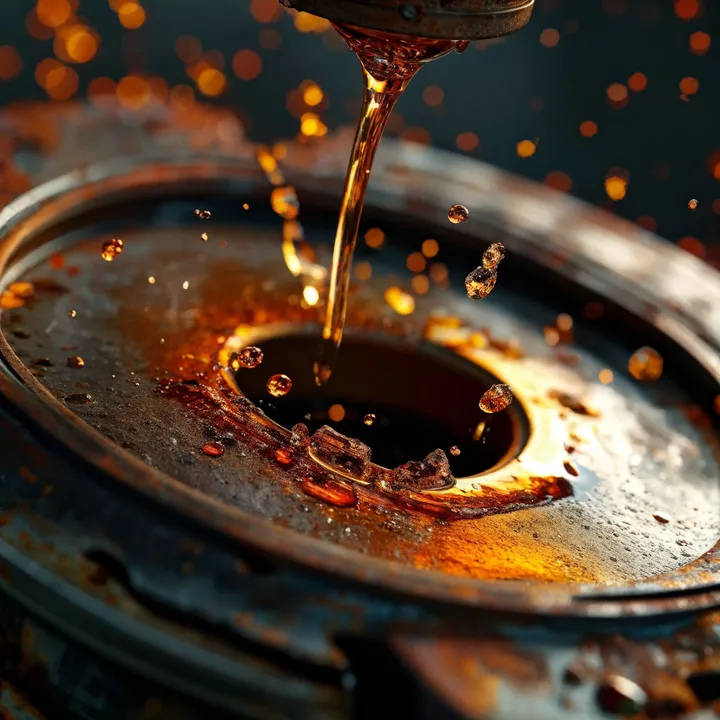
Contaminated brake fluid can cause a host of problems for caliper pistons. Moisture in the fluid can lead to corrosion, while debris can clog the small passages in the caliper and prevent the piston from moving freely. Old, dirty brake fluid can also become less effective at lubricating the piston seals.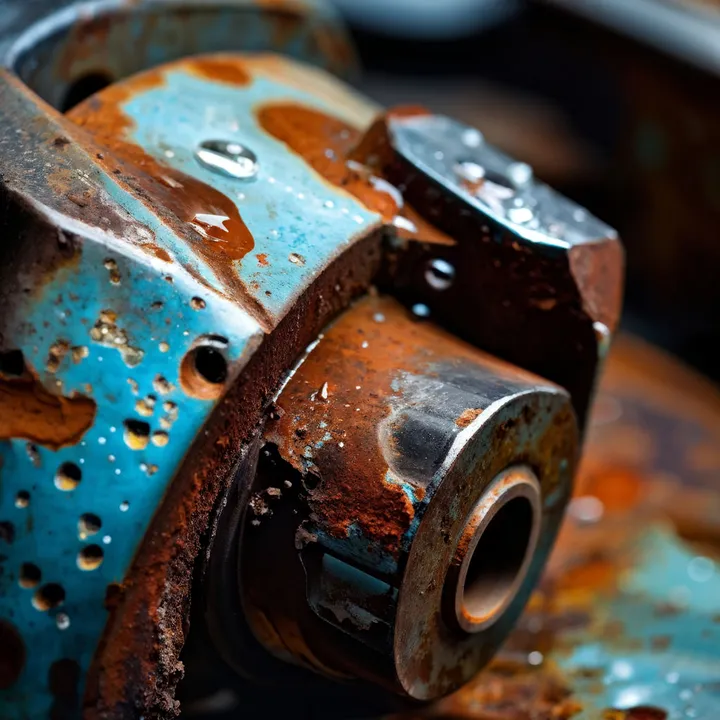
Piston seals can become damaged in several ways:
Wear and tear from normal use
Exposure to extreme temperatures
Contamination by debris or chemicals
Improper installation or removal
| Type of Damage | Cause | Effect |
|---|---|---|
| Wear and tear | Normal use over time | Reduced sealing ability, leaks |
| Extreme temperatures | Exposure to high heat or cold | Hardening, cracking, or deformation |
| Contamination | Debris or chemicals in brake fluid | Swelling, softening, or deterioration |
| Improper installation | Damage during caliper service | Tearing, pinching, or misalignment |
A damaged piston seal may not provide the necessary tension to pull the piston back into the caliper when the brake pedal is released. This can cause the piston to remain partially extended, leading to brake drag and premature wear on the brake pads and rotor.
In addition to the piston and seals, other caliper components can wear out over time, contributing to piston sticking:
Caliper slide pins
Caliper bushings
Brake pad hardware
Worn caliper slide pins or bushings can cause the caliper to bind or stick, preventing the piston from retracting fully. Damaged brake pad hardware can also interfere with the proper movement of the piston and pads.
Several symptoms can indicate that your caliper piston is stuck:
| Symptom | Possible Cause | Diagnostic Step |
|---|---|---|
| Reduced braking performance | Stuck caliper piston, worn brake pads, contaminated brake fluid | Test brake performance, measure pad thickness, check fluid condition |
| Uneven brake pad wear | Sticking caliper piston, worn caliper slide pins or bushings | Inspect caliper components, measure pad thickness |
| Brake drag and overheating | Stuck caliper piston, damaged piston seal, improper pad installation | Check for caliper binding, inspect piston seals, ensure proper pad installation |
| Difficulty pressing brake pedal | Stuck caliper piston, low brake fluid level, air in brake lines | Check caliper function, measure fluid level, bleed brake system |
If you experience any of these symptoms, it's essential to diagnose and address the issue promptly to ensure your vehicle's safety and reliability.
To diagnose a stuck caliper piston, follow these steps:
Perform a visual inspection of the caliper components
Check for signs of corrosion, damage, or leaks
Check the brake fluid level and condition
Low fluid levels or contaminated fluid can indicate a problem
Measure the thickness of the brake pads
Uneven pad wear can suggest a sticking caliper piston
Conduct brake performance tests
Test for brake drag, pulling, or reduced stopping power
By systematically examining each component and conducting performance tests, you can pinpoint the cause of the stuck caliper piston and determine the appropriate course of action.
Remove the caliper from the vehicle
Carefully remove the piston from the caliper bore
Clean the piston and caliper bore with brake cleaner
Use a wire brush or sandpaper to remove any corrosion or debris
Rinse the components with clean brake fluid
Apply a thin layer of brake lubricant to the piston and seal
Ensure the lubricant is compatible with the rubber seal material
Avoid over-lubricating, as excess lubricant can attract debris
Inspect the piston seals for signs of damage, such as:
Cracks or tears
Hardening or brittleness
Swelling or deformation
Remove the old seal from the piston
Clean the piston groove and caliper bore
Lubricate the new seal with brake fluid
Carefully install the new seal, ensuring proper orientation and seating
Clean, moisture-free brake fluid is essential for the proper operation of your brake system. Contaminated fluid can cause corrosion, seal damage, and reduced braking performance.
Locate the brake fluid reservoir and remove the cap
Use a brake fluid pump or syringe to extract the old fluid
Refill the reservoir with fresh, DOT-compliant brake fluid
Bleed the brake system to remove any air bubbles and ensure proper fluid flow
In some cases, cleaning and lubricating the piston may not be enough to restore proper function. If the piston is severely corroded, pitted, or damaged, replacement is necessary.
Remove the caliper from the vehicle
Carefully remove the old piston from the caliper bore
Clean the caliper bore and inspect for damage
Lubricate the new piston and seal with brake fluid
Install the new piston, ensuring proper alignment and seating
After replacing brake fluid or servicing the calipers, it's crucial to bleed the brake system to remove any air bubbles. Air in the brake lines can cause a spongy pedal feel and reduced braking performance.
Locate the brake bleeder valves on each caliper
Connect a clear bleeder hose to the valve and place the other end in a container
Have an assistant pump the brake pedal several times, then hold it down
Open the bleeder valve to allow fluid and air to escape, then close the valve
Repeat this process until the fluid flows clear and bubble-free
To minimize the risk of caliper piston issues, follow these preventive maintenance tips:
Schedule regular brake system inspections
Change brake fluid according to the manufacturer's recommendations
Properly lubricate caliper components during brake service
Address any brake fluid leaks promptly
By staying proactive with your brake system maintenance, you can extend the life of your caliper pistons and ensure optimal braking performance.
Understanding the common causes of a stuck caliper piston and knowing how to fix them is essential for maintaining your vehicle's braking performance and safety. By following the troubleshooting steps and preventive maintenance tips outlined in this article, you can keep your caliper pistons working smoothly and avoid potential brake system issues. Remember, if you encounter a complex problem or have concerns about your ability to perform brake repairs safely, consult with a professional to ensure the best possible outcome.
The most frequent reasons a caliper piston gets stuck are corrosion, insufficient lubrication, polluted brake fluid, deteriorated seals, and worn-out components. Any of these issues can prevent the piston from retracting smoothly when the brake pedal is released.
Symptoms of a stuck caliper piston include reduced braking performance, uneven brake pad wear, brake drag and overheating, and difficulty pressing the brake pedal. If you notice any of these warning signs, it's best to diagnose the issue promptly.
While you may be able to operate your vehicle with a stuck caliper temporarily, it's not advisable to continue driving it that way. A stuck caliper can cause reduced braking power, premature brake wear, and potential safety hazards.
To repair a caliper with a stuck piston, the caliper needs to be removed, disassembled, cleaned, and rebuilt with new seals and lubrication. In some cases, the piston or entire caliper may need to be replaced if damage is severe.
Depending on your mechanical aptitude and access to proper tools, it may be possible to free a stuck caliper piston yourself. However, if you are unsure about the repair process or encounter any difficulties, it's best to consult a professional mechanic.
The price to fix a caliper with a stuck piston can vary based on the make and model of your vehicle and the severity of the issue. On average, you can expect to pay between $300-$800 for parts and labor.
The repair time for a stuck caliper piston depends on whether the caliper can be rebuilt or needs full replacement. Typically, the job takes between 1-3 hours from start to finish.
To help prevent stuck caliper pistons, have your brakes serviced regularly, replace brake fluid as recommended, keep calipers clean and lubricated, and address any brake fluid leaks immediately. Staying on top of brake maintenance goes a long way.
While it may be tempting to spray penetrating oil or lubricant on a stuck piston, it's generally not advisable. Those products can contaminate the brake pads and rotors and cause bigger issues. It's best to properly disassemble, clean and lubricate the caliper.
Neglecting to repair a stuck caliper piston can result in continued brake drag, reduced braking performance, excessive heat buildup, premature brake wear, and potential failure of the caliper. For your safety, it's crucial to address stuck calipers as soon as possible.

Miguel started tinkering with car radios as a teenager, fascinated by the intricate dance of wires and circuits. This passion led him to pursue a career as an automotive electrician. For the past 10 years, Miguel has tackled everything from flickering headlights to mysterious electrical gremlins. He thrives on troubleshooting electrical problems and enjoys sharing his knowledge to empower car owners to understand their vehicles better.








